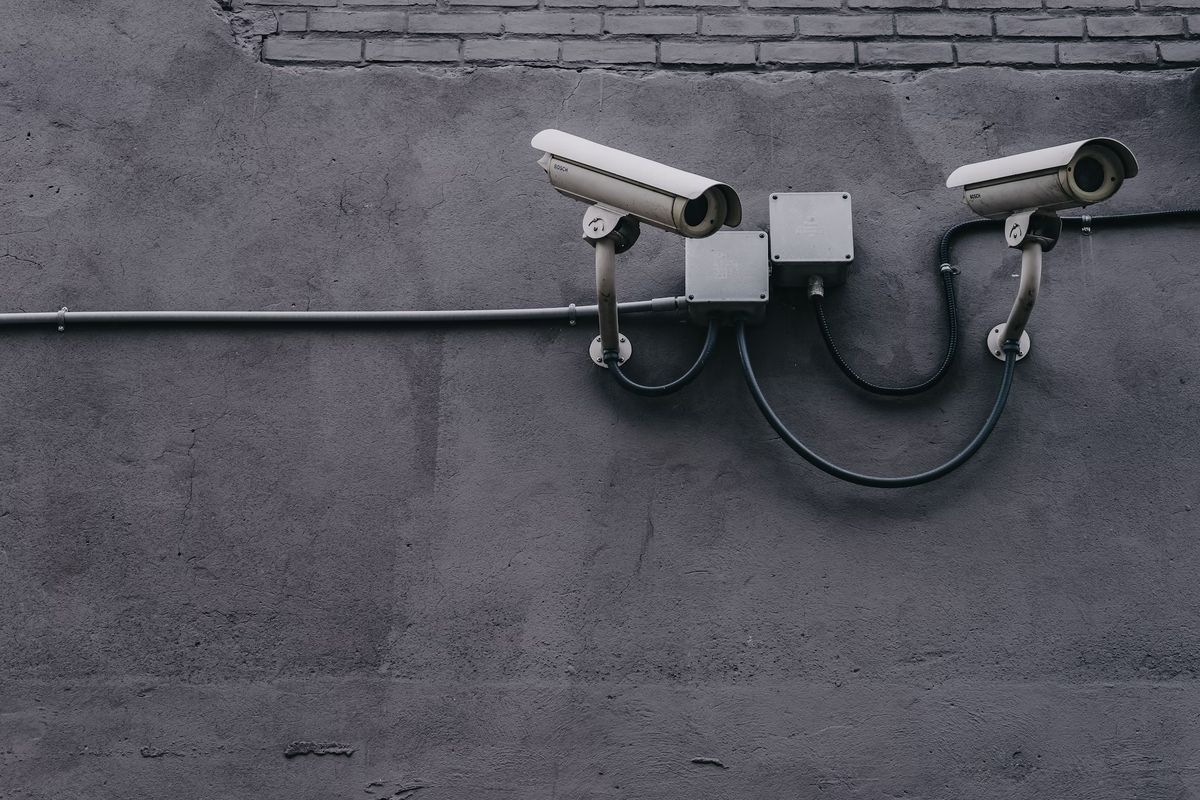IoT development involves the use of tools and technologies to design, build, test, and deploy IoT devices and systems. In this article, we will explore the importance of IoT development and some of the challenges that come with it, along with the tools and technologies used in IoT development.
The Internet of Things (IoT) has rapidly become one of the most significant technology trends in recent years, with its potential to transform businesses, industries, and society. As IoT devices and systems become more prevalent, IoT development has become increasingly important to create and deploy these systems effectively.
The increasing importance of IoT in various industries
In recent years, the Internet of Things has emerged as a disruptive force in various industries, including manufacturing, healthcare, transportation, and retail. IoT technology enables the connection and exchange of data between devices, machines, and people, leading to new and innovative business models and opportunities.
The increasing importance of IoT lies in its ability to collect and analyze vast amounts of data, providing real-time insights and actionable intelligence to businesses. This data-driven approach has the potential to transform operations, improve customer experiences, and increase revenues across industries. According to Statista’s estimates, total consumer spending on smart home products and services worldwide will be $159 billion.
Advantages of IoT
IoT technology offers numerous advantages to businesses, including increased efficiency, productivity, and profitability. By connecting devices and machines, businesses can automate processes, reduce waste, and improve decision-making. Additionally, IoT data can be used to gain a deeper understanding of customer behavior, preferences, and needs, enabling businesses to tailor products and services to meet those needs. The ability to remotely monitor and control devices also increases safety and security, reducing the risk of accidents and theft.
Improving efficiency and productivity with IoT
IoT technology can significantly improve efficiency and productivity in industries such as manufacturing, logistics, and agriculture. By connecting machines and sensors, businesses can monitor production processes in real time, identify bottlenecks, and optimize workflows. IoT-enabled predictive maintenance also helps prevent equipment breakdowns, reducing downtime and maintenance costs. In addition, IoT sensors can be used to monitor and optimize resource usages, such as energy and water, leading to cost savings and sustainability benefits.

Reducing costs and increasing profitability with IoT
IoT technology can help businesses reduce costs and increase profitability by improving operational efficiency, reducing waste, and creating new revenue streams. By automating processes and collecting real-time data, businesses can optimize resource usage and reduce energy consumption, saving on costs.
IoT-enabled predictive maintenance also reduces the need for costly repairs and downtime. In addition, IoT data can be used to create new revenue streams, such as offering data analytics services to customers or using data to develop new products and services.
Enhancing safety and security with IoT
IoT technology can enhance safety and security in industries such as healthcare, transportation, and manufacturing. By connecting devices and sensors, businesses can monitor and control processes remotely, reducing the risk of accidents and ensuring compliance with safety regulations. IoT-enabled predictive maintenance also helps prevent equipment breakdowns that can pose safety risks. Additionally, IoT sensors can be used to monitor and detect potential security threats, such as unauthorized access or theft, enabling businesses to take proactive measures to prevent these incidents.
Building trust in IoT ecosystems: A privacy-enhancing approach to cybersecurity
Disadvantages of IoT
While the Internet of Things offers numerous benefits, such as increased efficiency and productivity, it also comes with its own set of disadvantages. In this article, we will explore some of the potential drawbacks of IoT, such as security vulnerabilities and privacy concerns.
Security risks associated with IoT devices
One of the most significant disadvantages of IoT technology is the potential security risks associated with connected devices. Since IoT devices are connected to the internet and can exchange data with other devices and systems, they can be vulnerable to cyber-attacks, data breaches, and hacking. IoT devices often lack the necessary security features, making them easy targets for cybercriminals. Additionally, IoT devices can be used to launch large-scale attacks, such as Distributed Denial of Service (DDoS) attacks, which can disrupt entire networks.
Privacy concerns with IoT data collection
Another significant disadvantage of IoT technology is the potential privacy concerns associated with the collection and use of IoT data. IoT devices can collect vast amounts of data about individuals, including their location, behavior, and personal information. This data can be used by businesses for various purposes, such as targeted advertising, personalized recommendations, and product development. However, the collection and use of this data can also raise privacy concerns, as individuals may not be aware of the data collected or how it is being used.
Interoperability and compatibility issues with IoT devices
IoT devices often use different communication protocols and standards, making it challenging to ensure interoperability and compatibility between devices from different manufacturers. This can lead to fragmentation and a lack of standardization, making it difficult for businesses to integrate and manage IoT devices. Additionally, the rapid pace of IoT development can result in older devices becoming obsolete quickly, leading to compatibility issues and potential security vulnerabilities.

Applications of IoT
The Internet of Things IoT is rapidly transforming various industries and sectors, from healthcare to agriculture to transportation. In this article, we will explore some of the most exciting and innovative applications of IoT, including smart homes, industrial automation, and healthcare monitoring.
- Smart homes: IoT devices can be used to automate and control various home appliances, such as thermostats, lighting, security systems, and entertainment systems, making homes more energy-efficient and convenient. For example, homeowners can use IoT-enabled thermostats to adjust the temperature in their homes remotely or use smart lighting to turn off lights automatically when no one is in the room.
- Industrial automation: IoT technology can be used to automate and optimize industrial processes, improving productivity and efficiency. For example, IoT-enabled sensors can monitor machine performance in real time, detecting issues before they lead to breakdowns or downtime. Additionally, IoT technology can be used to track inventory levels, monitor supply chains, and optimize logistics, reducing waste and costs.
- Healthcare monitoring: IoT devices can be used to monitor patients’ health remotely, providing doctors and caregivers with real-time data on vital signs and symptoms. For example, wearable IoT devices can track heart rate, blood pressure, and other metrics, alerting healthcare providers to potential issues. Additionally, IoT technology can be used to manage medication adherence, monitor chronic conditions, and track patient activity levels.
- Smart cities: IoT technology can be used to create smart cities, improving public services and enhancing sustainability. For example, IoT-enabled sensors can be used to monitor traffic flow, optimize public transportation, and manage energy usage in buildings. Additionally, IoT technology can be used to improve public safety, such as by detecting and responding to emergencies in real time.
- Retail analytics: IoT technology can be used to collect and analyze data on customer behavior, preferences, and buying patterns, improving marketing and sales strategies. For example, IoT-enabled sensors can track customer movements in stores, providing insights into how customers navigate and interact with products. Additionally, IoT technology can be used to personalize promotions and offers based on individual customer data.
- Environmental monitoring: IoT devices can be used to monitor and manage environmental conditions, such as air quality, water quality, and weather patterns. For example, IoT-enabled sensors can monitor air pollution levels, alerting authorities to potential health risks. Additionally, IoT technology can be used to manage irrigation systems, monitor soil conditions, and optimize crop yields in agriculture.
What is IoT data?
IoT data refers to the information collected by connected devices in the Internet of Things (IoT) ecosystem. IoT devices can collect a wide range of data, including sensor readings, user interactions, and environmental conditions. This data is typically transmitted over the internet and stored in cloud-based platforms or databases, where it can be processed and analyzed.
The importance of IoT data for insights and decision-making
IoT data plays a crucial role in providing businesses with real-time insights and actionable intelligence. By collecting and analyzing vast amounts of data, businesses can gain a deeper understanding of their operations, customers, and markets. IoT data can be used to optimize production processes, reduce costs, and improve customer experiences.
Additionally, IoT data can be used to predict and prevent equipment breakdowns, reducing downtime and maintenance costs. The ability to access and analyze IoT data in real time is a game-changer for businesses, enabling them to make data-driven decisions that can lead to significant improvements in efficiency, productivity, and profitability.
Understanding IoT data structures
IoT data comes in various formats and structures, depending on the type of device and data being collected. Understanding the different data structures is essential for businesses to effectively collect, store, and analyze IoT data. IoT data can be classified into three main types: structured, semi-structured, and unstructured.
Structured data refers to data that has a defined schema and is organized into tables, such as sensor readings. Semi-structured data refers to data that is organized but not as rigidly defined as structured data, such as JSON or XML files. Unstructured data refers to data that has no defined schema or organization, such as social media feeds or video streams. Businesses need to have a clear understanding of the data structures they are working with to ensure they are effectively managing and analyzing their IoT data.
The types of IoT data and their sources
IoT data can come from a variety of sources, including sensors, devices, and user interactions. There are three main types of IoT data:
- Descriptive data: This type of data provides information about the current state of a system or process, such as temperature readings or machine performance metrics.
- Diagnostic data: This type of data provides information about the causes of events or issues, such as sensor readings that indicate a machine is overheating.
- Predictive data: This type of data is used to predict future events or outcomes, such as machine failure or supply chain disruptions.

Here are some examples of sources of IoT data:
- Sensors and devices that collect data on temperature, humidity, pressure, and other environmental conditions
- User interactions with IoT-enabled devices, such as smart homes or wearables
- Machines and equipment that generate data on performance and usage
- Social media and online sources that provide data on consumer behavior and preferences
The challenges of managing and analyzing IoT data
While IoT data offers significant benefits, managing and analyzing this data can be challenging. Some of the main challenges include the following:
- Data volume: IoT devices can generate vast amounts of data, making it difficult to store, process, and analyze.
- Data variety: IoT data can come in many different formats and structures, making it challenging to manage and integrate with other data sources.
- Data velocity: IoT data is often generated in real-time, requiring businesses to process and analyze data quickly to gain insights and take action.
- Data quality: IoT data can be noisy or incomplete, making it challenging to ensure data accuracy and reliability.
How can data science optimize performance in IoT ecosystems?
Real life examples of IoT data
Here are some real-life examples of IoT data:
- Smart home data: Data collected from smart homes can include temperature readings, lighting usage, and energy consumption.
- Transportation data: Data collected from IoT-enabled vehicles can include fuel consumption, engine performance, and driving behavior.
- Manufacturing data: Data collected from machines and equipment in manufacturing plants can include machine performance metrics, maintenance schedules, and production yields.
- Agriculture data: Data collected from IoT-enabled sensors in agriculture can include soil moisture levels, temperature, and weather patterns.
- Healthcare data: Data collected from wearable IoT devices can include heart rate, sleep patterns, and physical activity.

Understanding IoT development
IoT development refers to the process of creating IoT-enabled devices and systems. The development process typically involves four stages: design, building, testing, and deployment.
The stages of IoT development
Here are brief explanations of each stage of IoT development:
Design
During this stage, developers use IoT development frameworks to design the architecture and user interface for the IoT device or system.
Building
This stage involves selecting the appropriate IoT development kit or board and assembling the hardware and software components of the IoT device or system.
Testing
IoT developers use IoT development frameworks and analytics tools to verify that the device or system meets the requirements specified during the design stage.
Deployment
This stage involves using IoT development boards and cloud platforms to deploy the IoT device or system to the market or within an organization.

The challenges of IoT development
Here are some of the main challenges of IoT development:
- Security: IoT devices and systems can be vulnerable to cyber-attacks and data breaches, making security a top priority during development. Developers must use IoT development frameworks and protocols that prioritize security.
- Compatibility: IoT devices and systems often use different communication protocols and standards, making it challenging to ensure compatibility between devices from different manufacturers. IoT development kits and frameworks can help address compatibility issues.
- Scalability: IoT devices and systems can generate vast amounts of data, making it challenging to scale the systems to accommodate this data and ensure real-time processing. IoT development boards and cloud platforms can provide the necessary processing power and storage capacity to handle large amounts of data.
The tools and technologies used in IoT development
Here are some of the common tools and technologies used in IoT development:
- IoT development kits: These kits contain the necessary components, such as sensors, microcontrollers, and actuators, to create IoT devices and systems.
- IoT development boards: These are computing platforms designed specifically for IoT development, providing connectivity and processing power.
- IoT development frameworks: These are software frameworks that provide the necessary tools and libraries to develop IoT applications.
- Cloud platforms and analytics tools: These are cloud-based platforms and tools that provide storage, processing, and analytics capabilities for IoT data.
IoT protocols 101: The essential guide to choosing the right option
Final words
IoT development is a critical aspect of creating and deploying IoT devices and systems. Developers must use IoT development frameworks, kits, and boards to design, build, test, and deploy these devices and systems effectively. While IoT development offers many benefits, it also comes with its own set of challenges, such as security, compatibility, and scalability. As the IoT ecosystem continues to grow and evolve, it is essential to prioritize IoT development to ensure that these devices and systems can fulfill their potential to transform industries and society.





